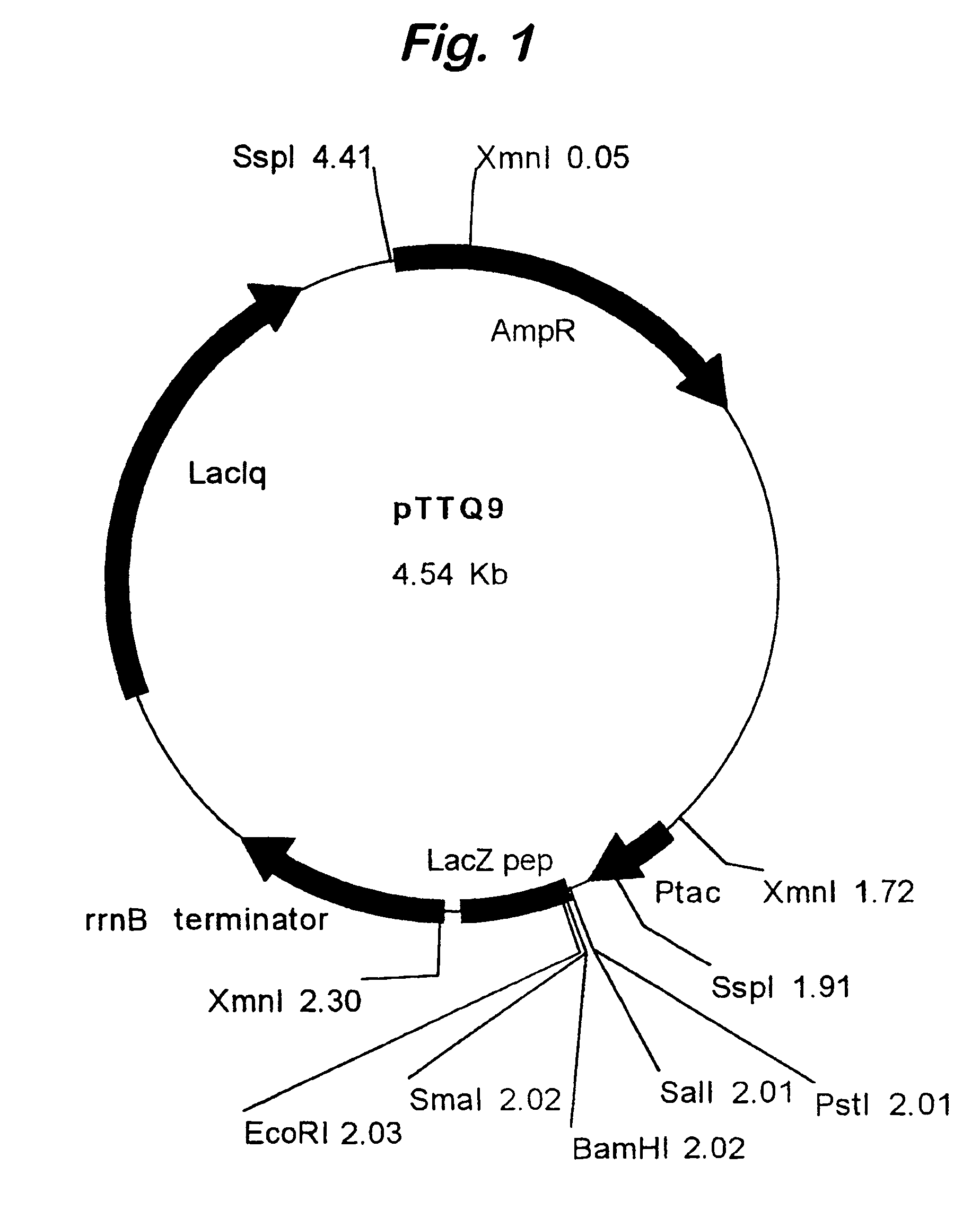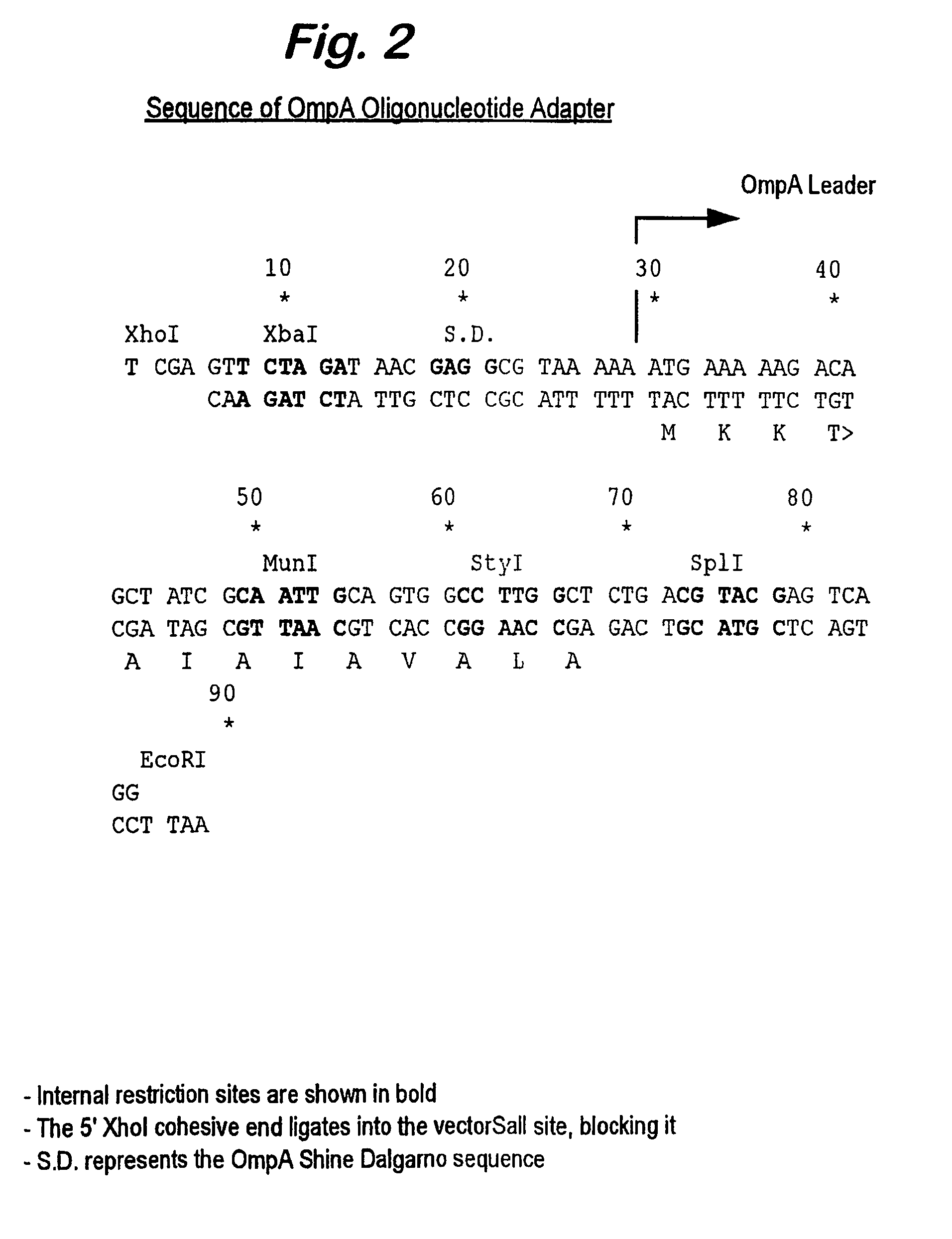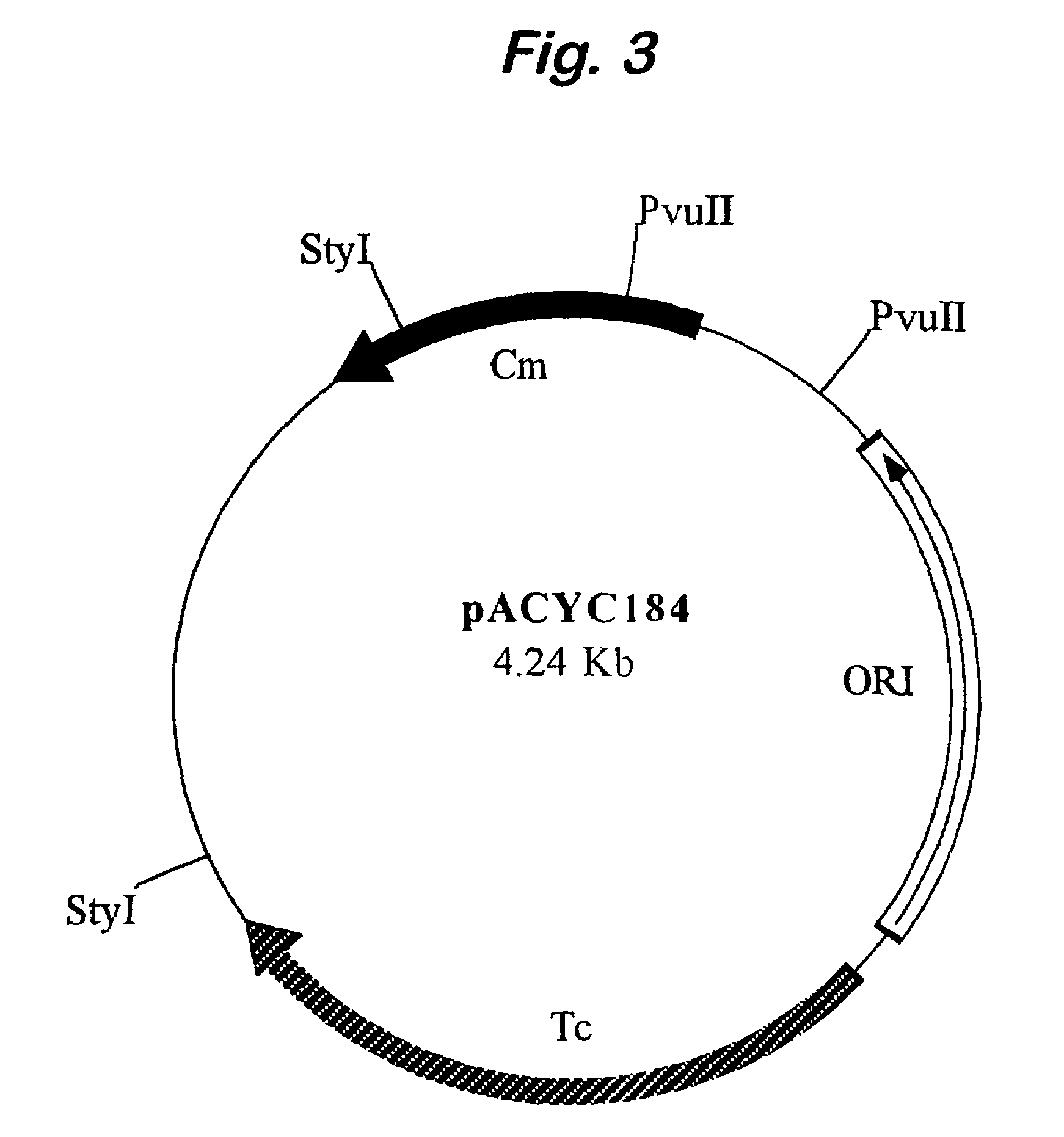Expression control using variable intergenic sequences
a technology of intergenic sequences and expression control, which is applied in the direction of immunoglobulins, genetic material ingredients, peptides, etc., can solve the problems of unsuitable human therapy antibodies, fab′ which folds more poorly, and is likely to be less tolerated by the host bacteria, so as to reduce increase the efficiency of translational initiation
- Summary
- Abstract
- Description
- Claims
- Application Information
AI Technical Summary
Benefits of technology
Problems solved by technology
Method used
Image
Examples
examples
A Dicistronic Message Encoding an Anti-TNFα Antibody
[0082]A dicistronic message of the present invention was used to achieve high level expression of anti-TNFα Fab′ fragments. The upstream cistron encoded the light chain of the antibody whilst the downstream cistron encoded the heavy chain of the antibody. A DNA sequence encoding the OmpA signal peptide was fused to the 5′ end of the DNA coding for each of the light chain and the heavy chain to allow efficient secretion to the periplasm.
[0083]A series of oligonucleotide cassettes coding for a range of different IGSs were used in the dicistronic message in order to vary the level of expression of the heavy chain. The use of different cassettes altered the rate of translational initiation of the heavy chain, resulting in a range of rates of accumulation of the translated heavy chain product.
[0084]A series of four IGSs were designed, permitting the experimental determination of the optimum sequence. The IGS variant that gave rise to th...
PUM
| Property | Measurement | Unit |
|---|---|---|
| half life | aaaaa | aaaaa |
| half life | aaaaa | aaaaa |
| half life | aaaaa | aaaaa |
Abstract
Description
Claims
Application Information
 Login to View More
Login to View More - R&D
- Intellectual Property
- Life Sciences
- Materials
- Tech Scout
- Unparalleled Data Quality
- Higher Quality Content
- 60% Fewer Hallucinations
Browse by: Latest US Patents, China's latest patents, Technical Efficacy Thesaurus, Application Domain, Technology Topic, Popular Technical Reports.
© 2025 PatSnap. All rights reserved.Legal|Privacy policy|Modern Slavery Act Transparency Statement|Sitemap|About US| Contact US: help@patsnap.com



